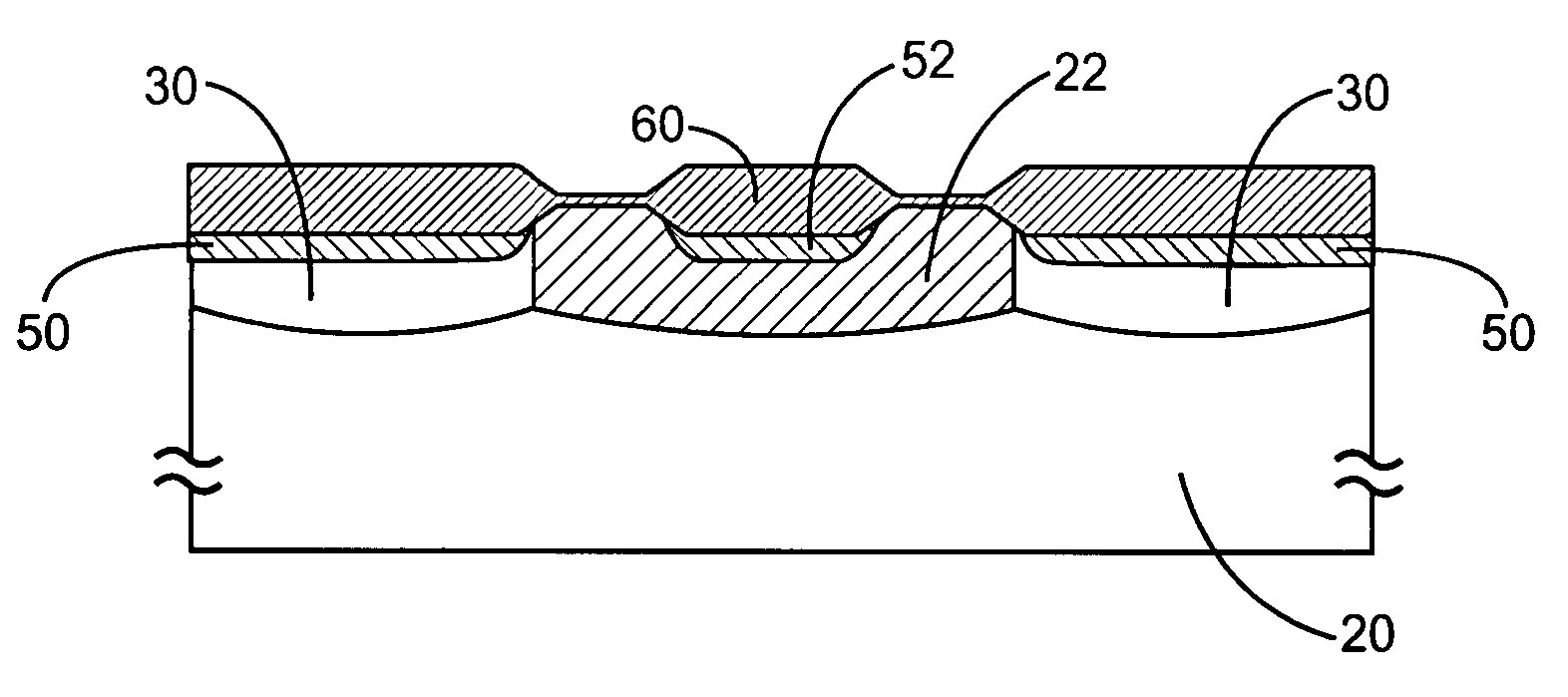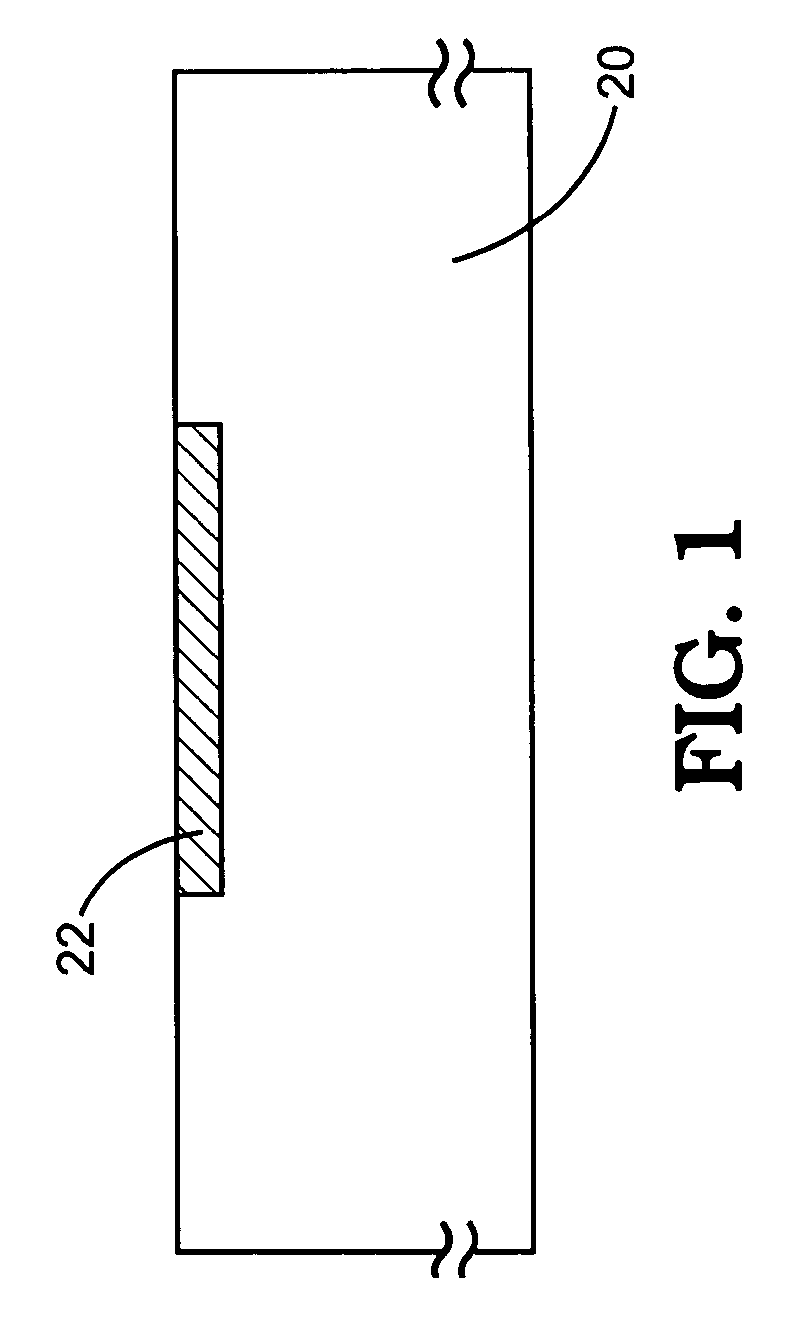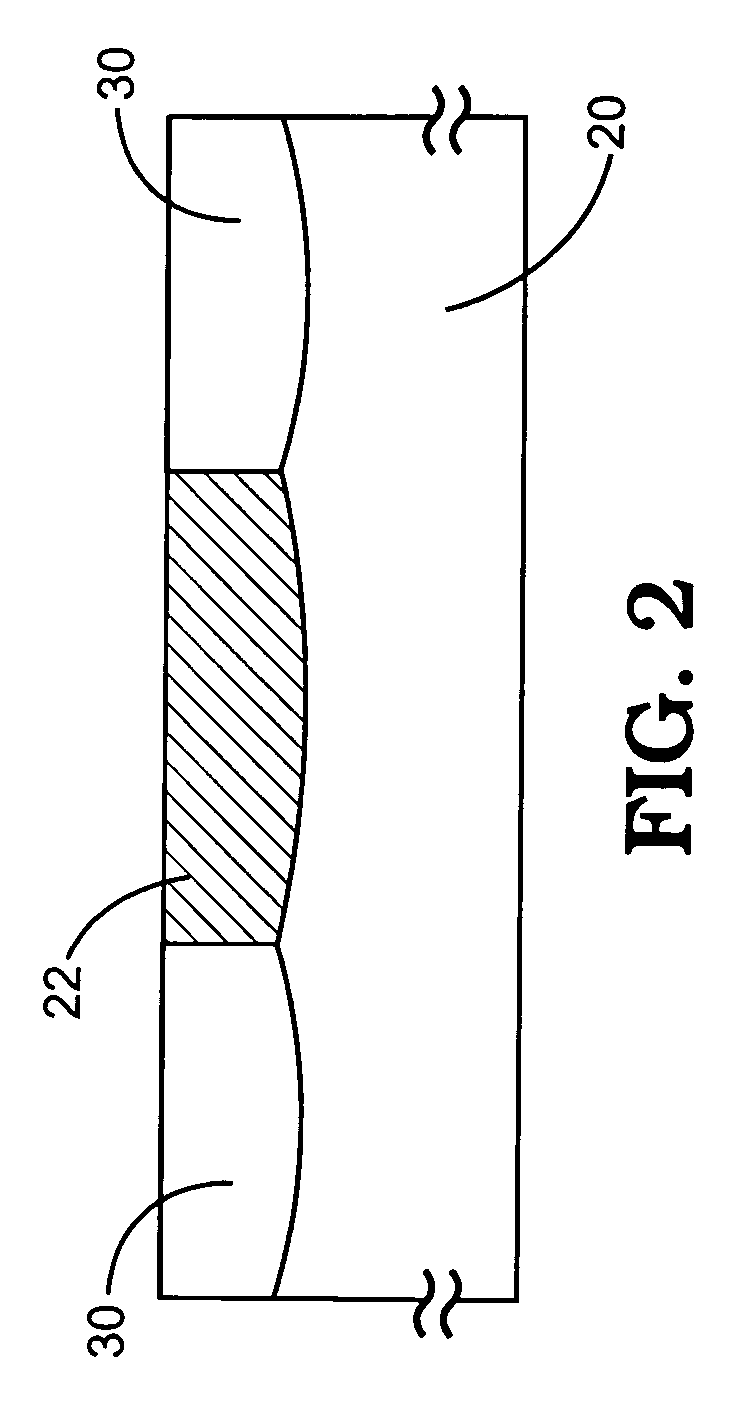Process of fabricating high resistance CMOS resistor
- Summary
- Abstract
- Description
- Claims
- Application Information
AI Technical Summary
Benefits of technology
Problems solved by technology
Method used
Image
Examples
Embodiment Construction
[0024] Referring now to the drawings wherein the contents are for purposes of illustrating the preferred embodiment of the invention only and not for purposes of limiting the same. Referring to FIG. 1, phosphorus ions are implanted in a p-type silicon substrate 20 to form an n-well 22. The p-type silicon substrate 20 is doped with boron ions to achieve a resistance of 8Ω-12Ω per cm. The n-well 22 can be formed via well-known photolithography, etching and implantation process as follows. A photoresist layer is formed over the p-type silicon substrate 20. Next, the photoresist layer is exposed using a mask to expose predetermined portions of the photoresist layers. Next, the exposed photoresist is etched to remove the predetermined portions of the p-type silicon substrate 20. Next, an ion implementation is then carried out using an energy level of 100 KeV using phosphorus ions with a dosage level ranging from 6×1012 to 9×1012 ions / cm2.
[0025] Next, as FIG. 2 shows, boron ions are impl...
PUM
 Login to View More
Login to View More Abstract
Description
Claims
Application Information
 Login to View More
Login to View More - R&D
- Intellectual Property
- Life Sciences
- Materials
- Tech Scout
- Unparalleled Data Quality
- Higher Quality Content
- 60% Fewer Hallucinations
Browse by: Latest US Patents, China's latest patents, Technical Efficacy Thesaurus, Application Domain, Technology Topic, Popular Technical Reports.
© 2025 PatSnap. All rights reserved.Legal|Privacy policy|Modern Slavery Act Transparency Statement|Sitemap|About US| Contact US: help@patsnap.com



